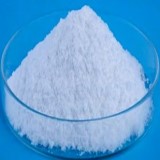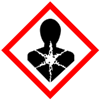 |
Ba(NO3)2, Barium Nitrate SDS Safety Data Sheet of Supplier Exporter Manufacturers' Representative |
Email: info@ammol.org |
Call Toll Free +1-855-552-6665 |
Barium Nitrate
CAS Number: 10022-31-8
Molecular Formula: Ba(NO3)2
Molecular Weight: 261.34

Barium Nitrate
Barium Nitrate SDS, Safety Data Sheet
MSDS Sheet, Material Safety Data Sheet 02-Jan-25
1. Product Identification
Product Name & Other Names: Barium Nitrate.
CAS No.: 10022-31-8
EINECS: EC Number: 233-020-5
Relevant uses and uses advised against (if any): Industrial use only.
Supplier: As per letterhead.
2. Hazards Identification
GHS, Globally Harmonized System Classification in accordance with 29 CFR 1910
Classification according to Regulation (EC) No 1272/2008
Oxidizing solids (Category 3) H272
Acute toxicity - Oral (Category 3) H301
Serious eye damage/eye irritation (Category 2A) H319
Acute toxicity, Inhalation (Category 4) H332
Labeling according to GHS USA & Regulation (EC) No 1272/2008
GHS Label Elements Oxidizing Solid |
GHS Label Elements |
Signal Word: Warning
Hazard Statements:
H272: May intensify fire; oxidizer.
H301: Toxic if swallowed.
H319: Causes serious eye irritation.
H332 Harmful if inhaled.
Precautionary Statements
P210: Keep away from heat/sparks/open flames/hot surfaces. - No smoking.
P220: Keep/Store away from clothing/other combustible materials.
P221: Take any precaution to avoid mixing with combustibles.
P260: Do not breathe dust/fume/gas/mist/vapors/spray.
P264: Wash thoroughly after handling.
P270: Do not eat, drink or smoke when using this product.
P280: Wear protective gloves/protective clothing/eye protection/face protection.
P362: Take off contaminated clothing and wash before reuse.
P301+P312: IF SWALLOWED: Call a POISON CENTER or doctor/physician if you feel unwell.
P302+P352: IF ON SKIN: Wash with soap and water.
P305+P351+P338: IF IN EYES: Rinse cautiously with water for several minutes. Remove contact lenses, if present and easy to do. Continue rinsing.
P332+P313: If skin irritation occurs: Get medical advice/attention.
P337+P313 If eye irritation persists: Get medical advice/ attention.
3. Composition/Information on Ingredients
Product Name & Other Names: Barium Nitrate.
CAS No.: 10022-31-8
EINECS: EC Number: 233-020-5
4. First Aid Measures
Always seek medical attention after first aid measures are provided.
Inhalation: Remove to fresh air. If not breathing, give artificial respiration. If breathing is difficult, give oxygen. Get medical attention.
Ingestion: Never give anything by mouth to an unconscious person. Get medical attention.
Skin Contact: Wipe off excess material from skin then immediately flush skin with plenty of water for at least 15 minutes. Remove contaminated clothing and shoes. Get medical attention. Wash clothing before reuse. Thoroughly clean shoes before reuse.
Eye Contact: Immediately flush eyes with plenty of water for at least 15 minutes, lifting lower and upper eyelids occasionally. Get medical attention immediately.
5. Fire Fighting Measures
Flammability of the Product: Non-flammable. However, the product supports combustion.
Products of Combustion: When heated to decomposition, emits acid fumes.
Explosion: Containers may explode in the heat of a fire.
Fire Extinguishing Media: Preferably use water sprat. Use any means suitable for extinguishing surrounding fire.
Special Information: In the event of a fire, wear full protective clothing and NIOSH-approved self-contained breathing apparatus with full face piece operated in the pressure demand or other positive pressure mode. At high temperatures under fire conditions, it may produce toxic or irritating fumes. Fire-extinguishing work is done from the windward and the suitable fire-extinguishing method according to the surrounding situation is used. Uninvolved persons should evacuate to a safe place. It is a Strong Oxidizer. May decompose explosively when heated or involved in a fire. May accelerate burning if involved in a fire.
6. Accidental Release Measures
Personal precautions, protective equipment, and emergency procedures: Ventilate area of leak or spill. Avoid breathing dust/fumes/gas/mist/vapors/spray. Use individual protective equipment (waterproof boots, suitable protective clothing, safety glasses, etc.).
Environmental precautions: Do not let the product enter drains, soil, or water sources.
Methods and materials used for containment Cleanup procedures and Storage:
Small Spill: Avoid dust formation. Avoid breathing dust. Ensure adequate ventilation. Use appropriate tools to put the spilled solid in a convenient waste disposal container.
Large Spill: Contain spilled material. Cover with an inert, non-combustible absorbent material, (e.g., sand, earth, diatomaceous earth, vermiculite). Vacuum or sweep-up and remove to an approved disposal container.
7. Handling and Storage
Precautions for safe handling: Apply according to good manufacturing and industrial hygiene practices. Ensure proper ventilation. In case of insufficient ventilation, wear suitable respiratory equipment. Wash thoroughly after handling. Do not drink, eat, or smoke while handling. Avoid contact with skin, eyes, and clothing. Minimize dust generation. Avoid breathing dust/fumes/gas/mist/vapors/spray. Keep container tightly closed. Avoid ingestion and inhalation. Use individual protective equipment (waterproof boots, suitable protective clothing, safety glasses, etc.).
Conditions for safe storage, including any incompatibilities: Store in cool, dry, and ventilated area away from heat sources and protected from sunlight in tightly closed original container. Keep air contact to a minimum. Store protected from heat, sparks and ignition sources and incompatible materials. Avoid inhalation of dust/mist/vapor. Do not store with incompatible materials like reducing agents, organic materials, water, acid anhydrides, acids, bases.
8. Exposure Controls/Personal Protection
Airborne Exposure Limits:
USA. Occupational Exposure Limits (OSHA): 0.5 mg/m3 TWA.
USA. ACGIH Threshold Limit Values (TLV): 0.5 mg/m3 TWA.
Ventilation System: A system of local and/or general exhaust is recommended to keep employee exposures as low as possible.
Personal Respirators (NIOSH Approved): For conditions of use where exposure to dust or mist is apparent and engineering controls are not feasible a particulate respirator may be worn.
Skin Protection: Wear protective gloves and clean body-covering clothing.
Eye Protection: Use chemical safety goggles and/or full-face shield where dusting or splashing of solutions is possible. Maintain eye wash fountain and quick-drench facilities in work area.
Other Control Measures: Maintain good housekeeping in work area. Handle in accordance with good industrial hygiene and safety practice.
9. Physical and Chemical Properties
Appearance: White, lustrous crystals.
Odor: It is odorless.
Odor threshold: No information found.
pH: No information found.
Relative density: about 3.24
Melting Point: 592C literature.
Initial boiling point and boiling range: No information found.
Flash point: No information found.
Auto-ignition temperature: No information found.
Decomposition temperature: No information found.
Upper/lower flammability or explosive limits: No information found.
Vapor pressure: No information found.
Vapor density: No information found.
Evaporation rate: No information found.
Flammability (solid, gas): No information found.
Partition coefficient: n-octanol/water: No information found.
Solubility: Soluble in water. Insoluble in alcohol.
Viscosity: No information found.
10. Stability and Reactivity
Stability: Stable under ordinary conditions of use and storage.
Hazardous Decomposition Products: It emits toxic acid fumes when heated to decomposition. Nitrogen oxides (NOx), Barium oxide are formed.
Hazardous Polymerization: Will not occur.
Incompatibilities: Reactive with reducing agents, organic materials. Avoid acid anhydrides, acids, bases, reducing agents. The product may undergo hazardous decomposition, condensation, or polymerization, it may react violently with water to emit toxic gases or it may become self-reactive under conditions of shock or increase in temperature or pressure.
Conditions to Avoid: Incompatibles. Avoid contact with combustible material (paper, wool, oil).
11. Toxicological Information
Toxicity to Animals: LD50 (Oral-Rat) 390 mg/kg
Carcinogenic Effects: No information found.
Mutagenic Effects: No information found.
Teratogenic Effects: No information found.
Developmental Toxicity: No information found.
12. Ecological Information
Environmental Toxicity: The product may be harmful to plants, animals, and fish.
Persistence and Degradability: Unlikely to persist due to water solubility.
Mobility: Likely to be mobile due to water solubility.
Bioaccumulation/ Accumulation: No information found.
Results of PBT and vPvB assessment: No information found for assessment.
13. Disposal Considerations
Whatever cannot be saved for recovery or recycling should be managed in an appropriate and approved waste disposal facility. Follow all the pollution control rules.
14. Transport Information
DOT USA, TDG Canada & ADR/RID Europe:
Proper Shipping Name: Barium Nitrate
U.N. No.: 1446
Hazard Class and Packing Group Number: 5.1 (6.1), PG II
IMDG/IMO & IATA/ICAO:
Proper Shipping Name: Barium Nitrate
U.N. No.: 1446
Hazard Class and Packing Group Number: 5.1 (6.1), PG II
15. Regulatory Information
USA:
US SARA Hazard categories (section 311/312, 40 CFR 370-21): See section 2.
Section 16 - Additional Information
Disclaimer:
**************************
Our company provides this MSDS sheet in good faith but makes no representation as to its comprehensiveness or accuracy. This SDS sheet is intended only as a guide to the appropriate precautionary handling of the material by a properly trained person using this product. The above information has been compiled from various sources and has the possibility of discrepancy and being out-dated information. Individuals receiving the information must exercise their independent judgment and do further search in determining its appropriateness for a particular purpose. In no case shall our company be liable to loss or damages by the product user.
**************************
Please visit Main Page of Barium Nitrate Suppliers.
American Molecules, also known as ammol.org is a distributor, supplier and manufacturers' representative of all types of Pharmaceuticals, Functional Ingredients, Excipients and Specialty Chemicals in Texas USA. Our principals manufacture supply and export USP NF BP, Ph Eur, etc grades of chemicals pure and reagent grade, mineral fortifiers, FCC food grade. Tailor made particle size and customized specifications are offered. The principal's facility is having one or more of the certifications like FDA approval and GLP, cGMP, ISO9001, ISO14001, ISO/IEC 17025, ISO22000, FSSC 22000, ISO45001, FSSAI, Kosher, HALAL, COPP, WHO-GMP certified and Written Confirmation (WC) for export to Europe is available. The manufacturers suppliers and exporters observe WHO Good Manufacturing Practices and Good Laboratory Practices.





Suppliers and Manufacturers' Representative:

9910 Bent Oak Dr
Houston, TX 77040, USA
Call Toll Free: 1-855-55-AMMOL 1-855-552-6665
Email: info@ammol.org
